Calotes - Baryonyx Reference Sheet
This is the first piece in my second art book, so I hope you all like it! I do hope that all my wonderful viewers from my first book are still with me on this tour through my art journey!
It was exhausting to draw, especially all those details I forced myself into doing, but it was still so fun!
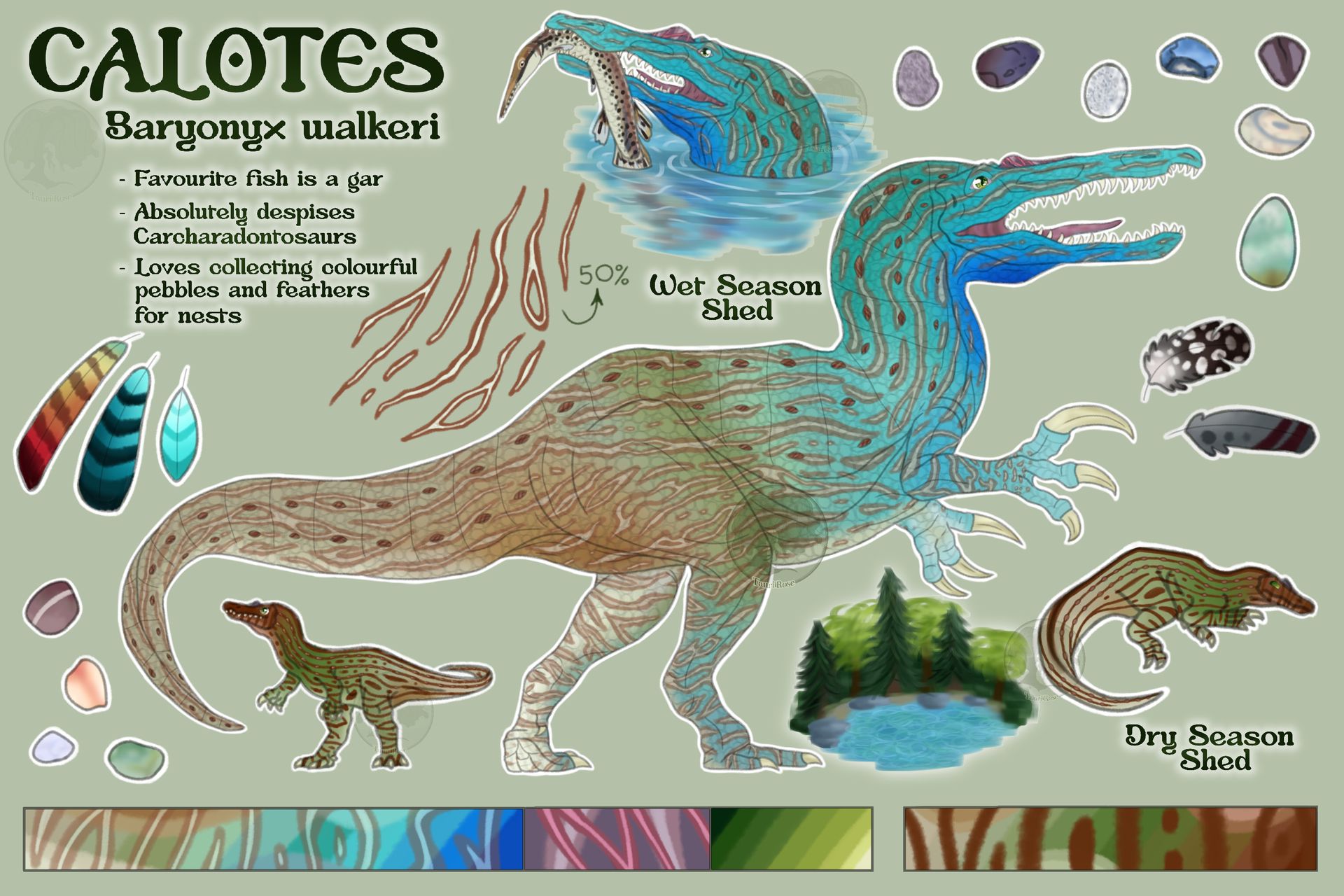
Baryonyx is my favourite carnivorous dinosaur - I just adore how they look! I wrote a whole overview about them, which I'll include at the end. ^^ I'm planning on doing something similar to a bunch of dinosaurs - mainly my favourites, but also a lot from the Barremian.
But anyway, the design is inspired by calotes lizards (hence his name), but I still made it by myself, so no copying.
I put some little fun facts into the ref sheet, because I think it helps create a nice character for him. I'm still experimenting with styles for dinosaurs and dragons, as well as for reference sheet layouts. But I'm liking how this one looks. What do you guys think?
And what do my fellow dinosaurs fans think of Calotes? Do feel free to share your dinosaur opinions on him - as long as you're polite, I'd love to hear from you!
Notes for myself and the audience (skip if you don't want to read a bunch):
• I made the crest a bit bigger than what is seen on an average skull, since I like to imagine they have a decent covering of keratin on them. I honestly love the image of two rival males sparring, showing off their crests and claws to impress a female.
• The odd shape of his back is not me lacking the ability to draw a decent-looking back - it's actually anatomically accurate! A lot of spinosaurs had, you guessed it, extensions along their spines. These formed sails in some species (like Spinosaurus and Oxalaia), and humps in other species (like in Baryonyx and Suchomimus), or sometimes somewhere in between (like in Ichthyovenator).
• I took some artistic liberties and added a few fantasy elements, but nothing so big as to ruin the dinosaur aura of Calotes. Hopefully. ^^' Becasue of this, please don't tell me off that he likes collecting feathers and has a favourite fish to eat. There are plenty of creatures nowadays that may have equal or lower intelligence than dinosaurs who do things like this. Please let me do some characterisation in peace. :]
Anywho...
Here's a closeup of his head. I think I did fairly alright with the paleo-accuracy to what a Baryonyx should look like.
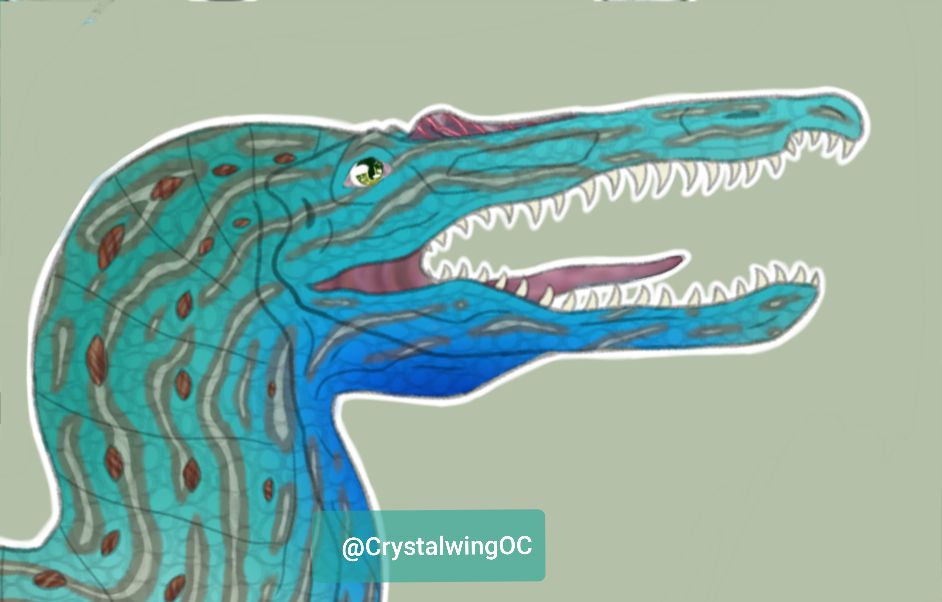
(This one below is not as good, because I couldn't get the jaws or eye right. Or the neck. Or anything at all actually.)
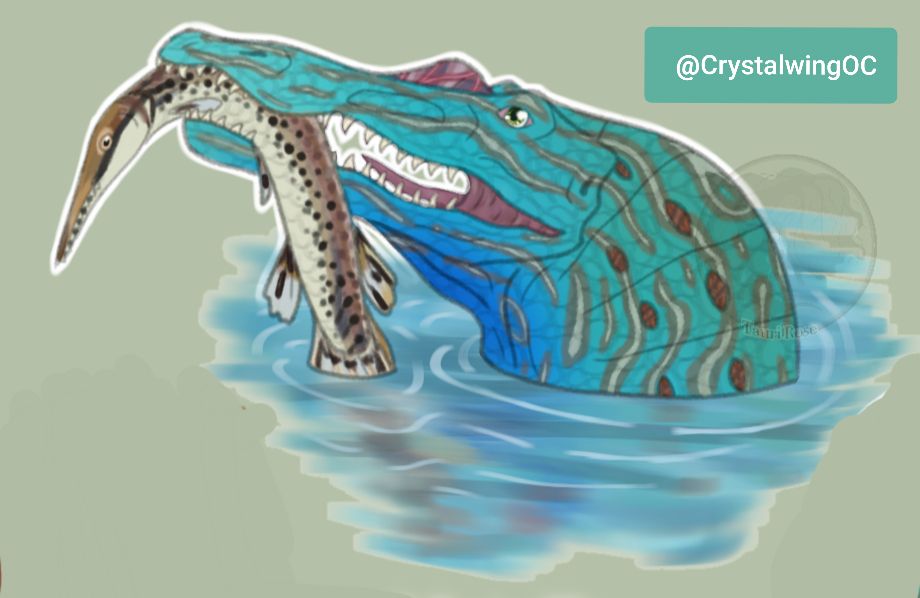
Details of the hide and scales on his haunches.
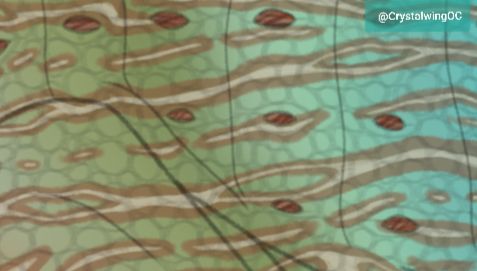
Wet Season shed colour palette:

Dry Season shed colour palette:

Someone a while back asked me how I draw "such realistic-looking dinosaurs". (I'm so sorry, it's been so long and I've been so busy, I can't remember or find who asked me... But if I do, I'll tag you in the comments, apologies!)
First off, thank you again, I'm very happy they look realistic! Second, I break down images of skeletons into bones or shapes, then I use those shapes to twist into poses and 'cover them' with muscles, flesh, etc. Maybe these will be clearer:
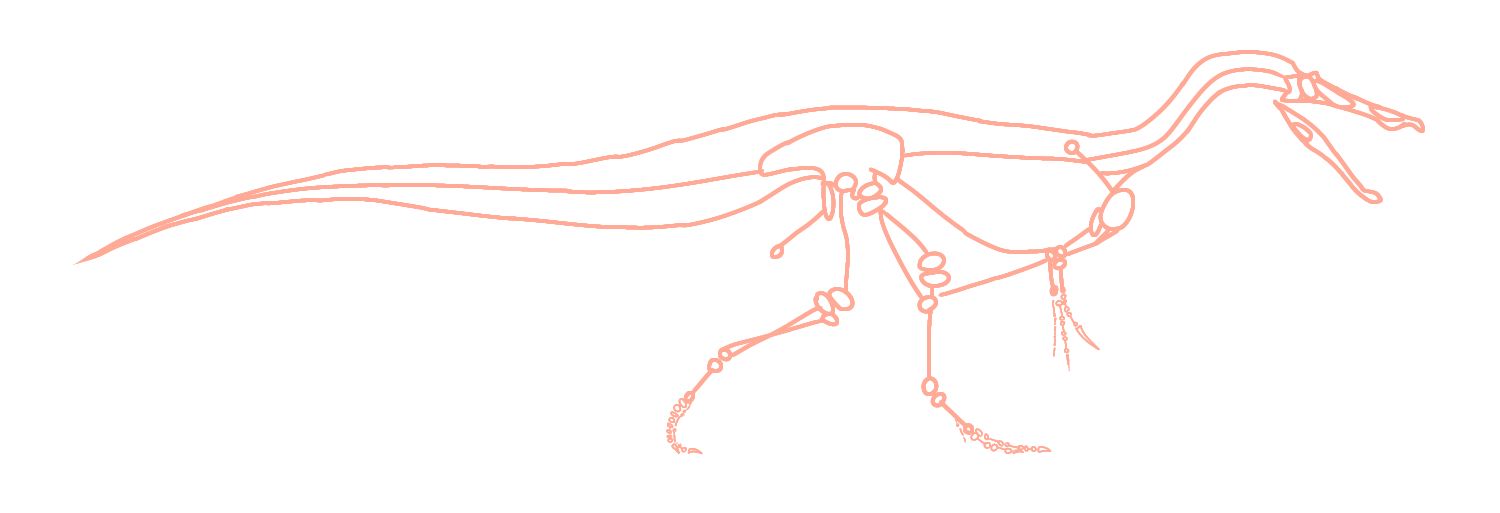
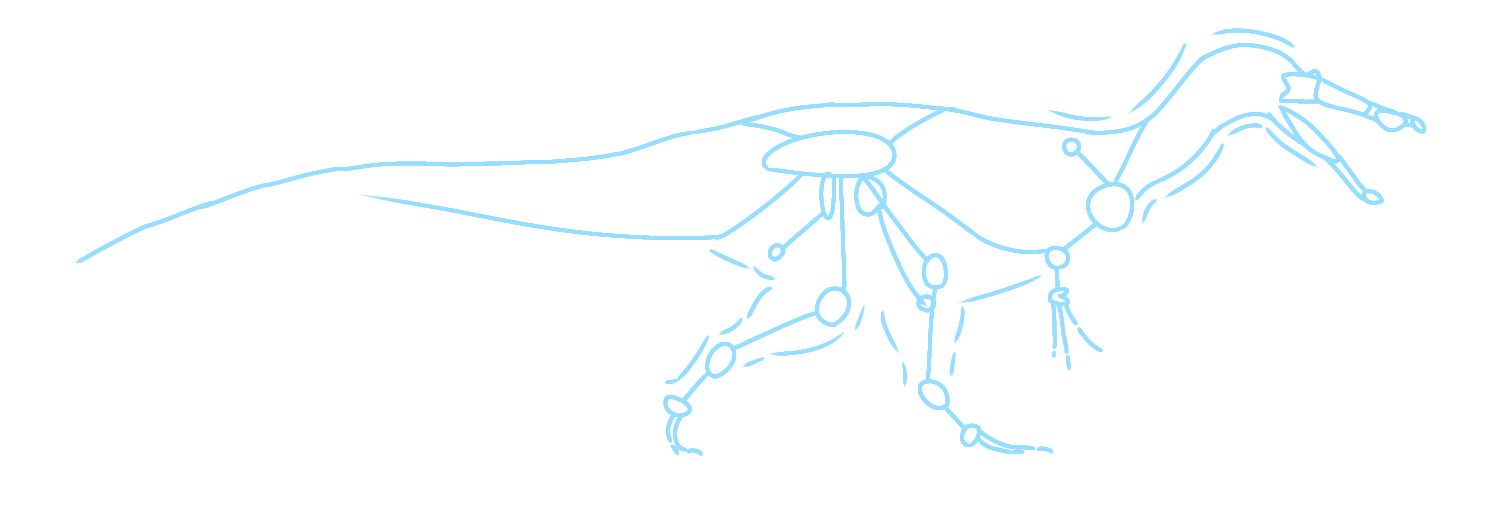
(^ I used an image of a skeleton reconstruction from DeviantArt in this one. ^)
The orange is supposed to represent bones while the blue shows the main shapes, in which I tried to only use wonky lines and circles/ovals.
I also use close-ups of skulls or claws sometimes, to get a clear understanding of how they're shaped.
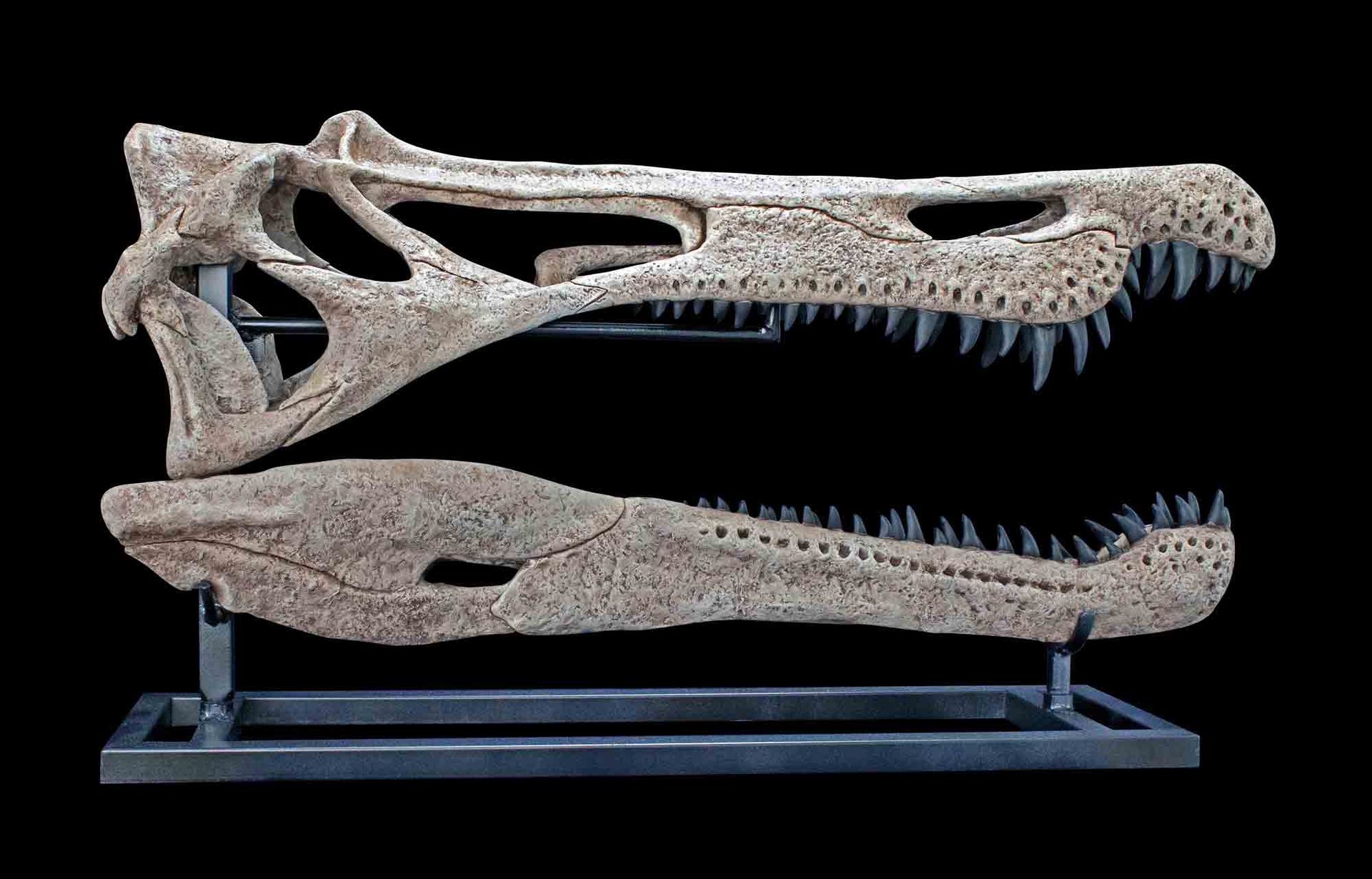

(^ These are [quite obviously] images of Baryonyx skulls from the internet. ^)
I hope this helped to shed some light on how I construct my dinosaur drawings! ^^
Thank you all so much for joining me here. Have a fantastic rest of your day or night! <33 Goodbye everyone and I hope to see you soon in another chapter!
~~~~~
𝗕𝗮𝗿𝘆𝗼𝗻𝘆𝘅 𝘄𝗮𝗹𝗸𝗲𝗿𝗶
Baryonyx walkeri was a species of the family Spinosauridae and subfamily of the eponymous Baryonychinae. Its name is derived from Greek βαρύς (barys) and ὄνυξ (onyx), which mean "heavy claw" (or "strong talon"). That was based off of the species' large claw on each of their first fingers, which could be around a foot long.
This dinosaur lived in the Barremian stage of the early Cretaceous, approximately 130-125 million years ago. It inhabited what is now northwestern Europe, mainly the southern areas of England and northern Spain. Baryonyx exemplifies one of the most complete fossils in the UK, and the most complete skeleton of any spinosaur.
As with many spinosaurs, the ecological details of Baryonyx are hard to discern. Its diet has been proven to be mainly fish, as well as young herbivores in its environment. Evidence for this can be seen in the half-digested scales of a Scheenstia and the bone of a juvenile iguanadontid found in a specimen's abdominal cavity.
It is scientifically accepted that Baryonyx could have been an active predator and opportunistic scavenger along with a fisher if need be, instead of exclusively piscivorous. Its diet could have also been affected by an individual's size. Larger specimens could attack larger prey by using their front claws, while smaller individuals could impale and shake apart smaller prey with their teeth. Baryonyx might have been able to widen its pharynx, similarly to a modern-day pelicans, letting individuals swallow most prey whole (or after dismembering it into more manageable chunks with their claws).
With the discovery that Baryonyx had denser bones than other spinosaurs, such as Suchomimus, it is thought to have been able to dive. Many scientists agree that it would have been able to dive, wade or dip into the water, depending on its environment. As with other spinosaurs, the concentration of fully terrestrial theropods and semi-aquatic crocodilians in its area, may have been a major factor in determining whether a Baryonyx was mainly land-based or preferred water.
The environment Baryonyx specimens lived in, would have been mostly a Mediterranean-like climate. Floodplains and chalk-rock cliffs would have been its main habitat, covered with tropical conifers, balmy forests and many rivers filled fish and crocodilians.
It would have lived alongside a vast ecosystem of other dinosaurs, birds, pterosaurs, reptiles, early mammals and fish, acting as one of apices of Barremian Europe. Some dinosaurs in its ecosystem would have been sauropods (like Eucamerotus and Iuticosaurus), nodosaurs (like Horshamosaurus and Polocanthus), ankylopollexias (like Brighstoneus and Mantellisaurus), carcharadontosaurs (like Neovenator and Concavenator), and dromaeosaurus (like Ornithodesmus, and possibly Nuthetes). Meanwhile, other organisms it lived with could have been: Iberomesornis and Eoalulavis (birds), Europajara and Vectidraco (pterosaurs), Theriosuchus and Bernissartia (crocodilians), Helochelydra and Larachelus (turtles), Laolestes and Eobaatar (mammalian rodents), and ancient relatives of gars, mudskippers, lungfish, herrings, and carpet sharks, to name a few.
Bạn đang đọc truyện trên: Truyen247.Pro